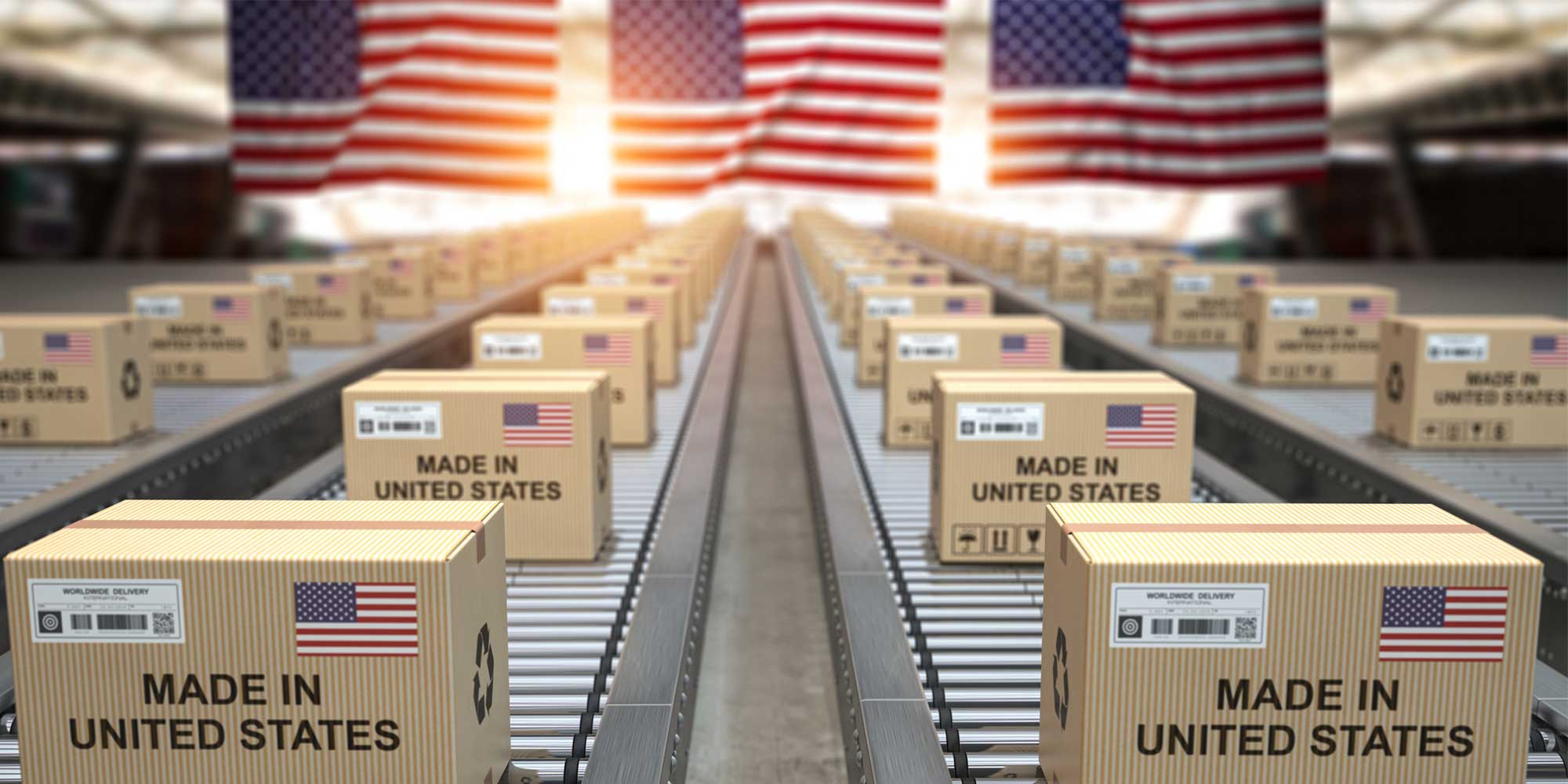It’s easy to forget that, just before the COVID-19 pandemic overwhelmed our lives and industry, new export regulations that took effect on March 9 were about to transform exports of firearms, ammunition, optics and related products. As a business owner or manager, you’re dealing with employees working from home and supply chain disruptions while struggling to manage an explosion of domestic sales. Creating new firearm export business isn’t a priority.
Got it. Makes total sense. But don’t completely lose sight of the once-in-a-lifetime opportunity that exists right now to reposition your export strategy so you’re ready to implement it as soon as the current boom ends . . . as you know it will.
NSSF reported on March 16, one week after the new regulations took effect, that exporters had already submitted export licenses for $1 billion of exports under the new regulations. Someone was thinking ahead. Were you one of them?
Whether you were or weren’t . . .
What are you doing to capitalize on the revolution in export opportunity that exists right now?
In this post, we offer three export action items you should make time to do now.
1. Identify the Products You Will Export.
Do you know which of your products can be exported without an export license under the new regulations? If you don’t, you should, and now is a good time to put someone to work on answering this question.
Here’s why the answer matters. Surefire, a company that has its eye on the ball, announced in The Outdoor Wire on April 24 that its flash hiders and muzzle brakes no longer require an export license. Flash hiders used to be “significant military equipment” under the ITAR and now they can be exported without any license at all. Surefire understands the significance of this change to their export sales potential and moved quickly to announce it to the market.
You should do the same. Odds are you sell more things that can be exported without a license today than you did before March 9. Maybe many more things. The range of handgun and rifle accessories that can now be exported to almost every country without a license is very broad and includes, among many other items: stocks, grips, accessory rails, scope mounts, iron sights, fiber-optic sights, sling swivels, butt plates, recoil pads, magazine components, magazine wells, magazine extensions and many upgrade kits.
Of the gun parts that do require an export license, almost all of them can be exported in shipments under $500 without a license. There is a huge opportunity here, too.
Consider scopes, as well. Telescopic, holographic, reflex, red dot, reticle sights and other sights with optical elements and most laser aiming devices can be exported to 30 countries without a license.

Despite these new avenues to increase export sales without export licenses, most of the industry remains stuck in the past and is overlooking export sales potential that exists today.
You are among them if your website, like many, still explains that you can’t ship your products to international purchasers because your products are controlled by the International Traffic in Arms Regulations. Most likely, they aren’t and the fact that they aren’t is the source of the new revenue potential.
Action Item: Create a list of the products you sell domestically that can be sold internationally without an export license.
When you see how long a list it is, your desire to take the next steps will grow.
2. Adapt Your International Strategy to the New Normal.
We don’t, of course, know what the “new normal” will look like in the post-pandemic world, but we know enough to start re-thinking our intermediate and long-term international sales strategies. Consider the following:
- Online sales will be an even more important channel than before the crisis. Look at the effect the pandemic has had on Amazon. With bricks and mortar stores closed and frightened shoppers staying home, Amazon is so overwhelmed with business that it has had to prioritize delivery of “essential” products. “Non-essential” products you could receive the next day before the pandemic now take two-three weeks. Investors see the change as long-term. Amazon’s stock price was $1,676 on March 12, 2020. It closed almost 50% higher, at $2,410, on April 24.
Like it or not, the pandemic has been good for online sales and at least some of the change that is occurring can be expected to stay with us after the crisis is over.
- The international market for U.S. firearms, components, accessories and optics is poised to explode. Take note of the $1 billion in new export licenses, mentioned above, that were filed with the Commerce Department within a week after the effective date of the new firearm export regulations. Consider also a company like TANDEMKROSS. Before the change in regulations, TANDEMKROSS shipped small orders to customers in three countries, with a $100 maximum to two of them. Today, TANDEMKROSS can accept licensable and non-licensable online orders from purchasers in 82 countries. They’re not alone.
- The current domestic boom will end. We all know that. Sales are way up for now and probably will stay strong into November, but there are an awful lot of gun owners out of work. How long will the boom last? Don’t forget 2019, or 2018, or 2017, three soft years in a row.
Where the above factors intersect is a new normal that includes increased international online sales of firearms and related products. Of course, your hands are pretty full today. But know that some of your competitors are advancing their international sales potential despite the challenges they face today.
Action Item: Start a planning process for building an online international presence in the post-pandemic world. Target an implementation date.
Will you be an early-adopter or a follower?
3. Make Your Website Linguistically Friendly.
Whether you think about it or not, your website introduces your company and products not only to potential customers who speak English, but also to those who don’t.
If you think internationally, you will recognize that, after Canada, the U.K., Australia, New Zealand, South Africa and a few island nations in the Caribbean, the rest of the world enjoys life in a language other than English. Sure, you will find English-speakers everywhere, but don’t you also want to reach people who prefer to use a different language?
It’s easier than you think. The key is to make your website one that can be translated effectively by Google Translate or other machine-translation services. With that objective in mind, there are some simple things you can start doing right now, pandemic or not, that over time can make your brand and products more accessible to potential customers who don’t speak English.
- Reduce the use of complex forms of expression. Expressions that can be very effective with American consumers may be confusing to non-English speakers relying on Google Translate. For example, describing a meticulously machined trigger as “glass-smooth” and “hyper-consistent” is very effective in English but machine-translates poorly. Expressing the same thoughts as “as smooth as glass” and “extremely consistent” doesn’t have quite the same punch but leads to better translations. Learn to write website content that works great in English and translates well. It’s a process, but if you work on it, over time you will improve your connection with the international shopper.
- Try not to embed text in image files. Many websites in the industry feature beautiful imagery of products in use by shooters or in other settings. Most of the time, text is baked into the images. If you translate your website into any other language using Google Translate, you will see that the text embedded in image files won’t translate. HTML text that is superimposed on image files will translate, however.
- Consider expressing weights and measures in metric units, too. We think of weights in ounces and pounds and lengths in inches and feet, but, internationally, most don’t. You won’t lose anything by expressing weights and measures two ways and you will demonstrate to international purchasers that you care about them, too.
- Create video content for the hearing-impaired. Many companies post video content to explain the installation, usage or repair of their products. Try creating future videos as though you were preparing content for the hearing-impaired and you will create better content for viewers who don’t speak English (and, not insignificantly, for the hearing-impaired, too). How do you do this? More and better visual demonstrations and less explanation. More “show” and less “tell.”
- Avoid pdf content. Assume that content you post in pdf format won’t be accessible to non-English-speakers. Pdf documents can be translated but not easily and instantly by visitors to your website.
Action Item: Start implementing the suggestions above on new website content you create. And keep at it.
To conclude, don’t miss the chance to lay the groundwork for your international future while you deal with the domestic surge and COVID-related disruptions that are your life today.
You won’t be the only one who is preparing for the new normal. Avoid being one of the many who aren’t.
EasyExport can help you seize the international opportunity that awaits. Please contact us to learn more.






